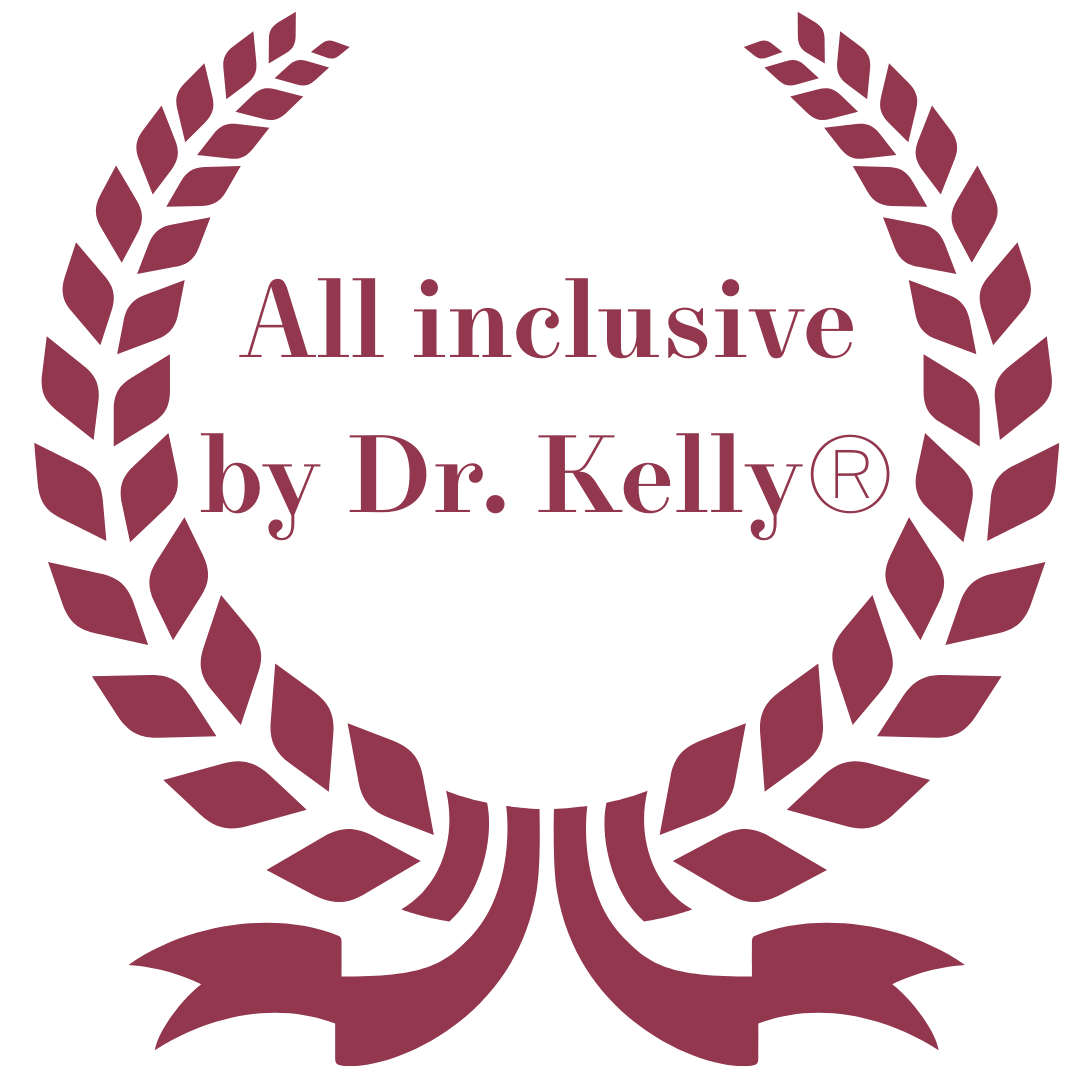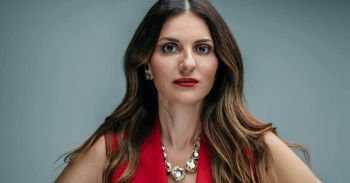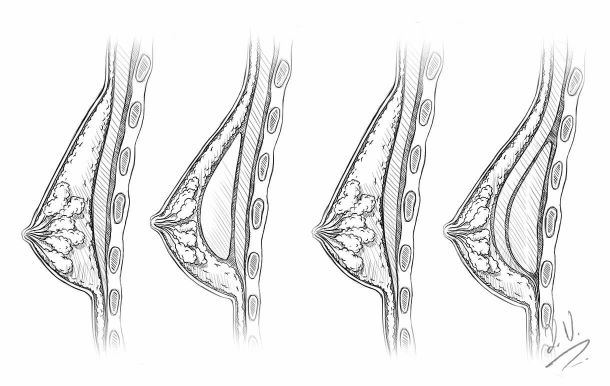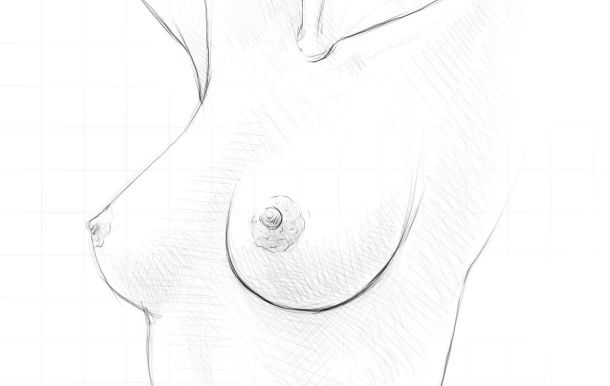Tubular Breast Correction: For natural harmony in breast shape.
Contents
- Overview
- What is a tubular breast?
- Dr. Kelly® All inclusive
- What causes tubular breast?
- How Common Are Tubular Breasts?
- Emotional vs Physical
- Augmentation or Lift
- How it works
- Implant
- Scar
- Breast Lift and tubular breast
- Recovery
- Tubular breast correction cost
- Why choose Dr. Kelly®
- Tubular breast correction FAQ
For many women, tubular breast is a term they hear for the first time when they come to us. What they have known for years, however, is the feeling that something about their breast shape has always felt incomplete. Since puberty, their breasts may not have fully developed, leaving them narrow, elongated, or asymmetric. Many of our patients have lived with this shape for years without knowing it has a name — tubular or tuberous breast.
Treatment Overview
Procedure:
Outpatient. After surgery, inpatient monitoring in a private patient room.
Duration of procedure:
approx. 2.5 hours
Downtime:
3-5 days
Anesthesia
Local anesthesia or twilight sleep
Complementary Treatments:
Cost:
from CHF 8,900 (without lift) / from CHF 13,400 (with breast lift or areola reduction)
Financing:
Flexible payment plans starting at 125 CHF/ month. More details here.
Dr. Kelly® All Inclusive
Everything included – one price, no surprise. See below for details.
What is a tubular breast?
Women with tubular breasts often notice one or more of the following features:
- The pigmented area around the nipple (areola) may appear larger than average, even from a young age.
- The areola may face slightly downward due to the shape of the breast base.
- The breast tissue may project forward through the areola, creating a rounded or elevated appearance.
- The lower part of the breast may lack fullness or appear underdeveloped.
- The base of the breast can appear narrow or constricted.
- The fold beneath the breast (inframammary fold) may sit higher than normal.
- There may be a shorter distance between the areola and the fold beneath the breast, which can affect the overall orientation of the breast.
- The breasts may be uneven in size or shape (asymmetrical).
- There may be a wider gap between the breasts than is typically seen.
But beyond anatomy, the impact is emotional. Many women describe growing up feeling as though their breasts “never finished developing” — a sense of something missing, almost like an invisible amputation of femininity.
That emotional experience can deeply influence self-esteem and body image. This is exactly where aesthetic surgery has a meaningful role: it restores not only the breast’s form, but a woman’s confidence and sense of wholeness.

Everything included – one price, no surprise
At Dr. Kelly®, transparency comes first. Our surgical fee includes:
- Surgery & surgical team (including anaesthesia, consumables, operating room, private ward)
- All follow-up visits – including extra appointments if needed
- Complication management according to medical standards
- Lifetime support for your surgical journey in our clinic*
- Result & safety assurance: we stand by your outcome – professionally and personally
- No Extra insurance needed: We got you covered, all the way to your result
Pay once – everything is included. No hidden fees, no unexpected costs.
What causes tubular breast?
The exact cause of tubular breast development is not fully understood, but it is believed to arise from a developmental variation during puberty.
In typical breast development, the glandular tissue expands evenly in all directions, forming a rounded shape with the nipple positioned centrally.
In tubular breasts, however, tight connective-tissue bands in the lower part of the breast restrict normal growth. This limited expansion causes the lower pole to remain underdeveloped, while the upper part of the breast continues to grow.
As a result, the breast may appear elongated or constricted, and the areola may appear more prominent or tilted downward. These characteristics stem from the uneven growth of the breast tissue — a structural difference rather than a medical disease.
While the exact cause is still under research, genetic and hormonal factors are likely involved.
How Common Are Tubular Breasts?
Tubular breasts are likely more common than most people realize. Many women live with this condition without knowing it has a name — simply believing that their breast shape is naturally different.
Because the condition is often unrecognized as a developmental variation, many mild or moderate cases remain undiagnosed. In our experience at Dr. Kelly®, a significant number of patients who visit us for breast surgery consultations actually present with some degree of tubular breast development — even if it has never been formally identified before. This underlines the importance of expert assessment and individualized treatment planning, ensuring that both the aesthetic goals and the unique anatomy of each woman are carefully understood and respected.
The Emotional Impact — More Than Just a Physical Condition
The effects of tubular breasts reach far beyond the physical form. For many women, the emotional weight of this condition is the hardest part to carry.
During adolescence and early adulthood — a time already filled with questions about body image and self-confidence — an underdeveloped or asymmetrical breast shape can cause deep insecurity. Many women describe avoiding intimacy, feeling uncomfortable in fitted clothing, or hiding their bodies out of embarrassment.
This is not vanity. It’s about feeling whole in your own skin — and that is a fundamental part of well-being. Recognizing the emotional burden is the first step toward healing. You deserve to feel balanced, feminine, and confident in your body — and it’s entirely possible with the right treatment and care.
“Tubular breasts are not a flaw — they’re a variation that can be beautifully corrected. At Dr. Kelly®, we don’t just reshape the body; we restore confidence — with precision, artistry, and compassion.”
Will a Breast Augmentation Alone Correct Tubular Breasts?
Not necessarily — and this distinction is very important.
There is a fundamental difference between small breasts and tubular breasts. While small breasts may be beautifully enhanced through a standard breast augmentation, tubular breasts require a more specialized, reconstructive approach to achieve natural and symmetrical results.
In tubular breasts, the lower breast tissue is narrow and restricted, so it cannot simply be filled out with an implant. Instead, the underlying structure must first be reshaped and released to create room for the new contour. Only then can an implant — if needed — be placed to complete the correction.
Each case is unique and should be carefully assessed by a breast surgery specialist. During your consultation at Dr. Kelly®, your surgeon will evaluate your anatomy — including breast symmetry, glandular development, areola position, and fold placement — and design a surgical plan that may combine elements of a breast lift and augmentation to achieve lasting harmony.
Although this approach may involve more detailed surgical planning, it is precisely this method that ensures a natural breast shape from the very first surgery, minimizing the need for future revisions.
How do we correct tubular breast at Dr. Kelly®?
A tubular breast correction is much more than a breast augmentation.
It is a reconstructive and aesthetic procedure that reshapes the breast gland, releases constricted tissue, and restores balance and symmetry.
The correction of tubular breasts is a highly demanding procedure that requires deep expertise and extensive experience — both in aesthetic and reconstructive breast surgery.
That’s why Dr. Kelly® is the right place for this delicate procedure.
Our surgeons combine technical precision with aesthetic artistry to reconstruct natural, symmetrical, and feminine breasts.
Depending on the individual grade of tubular deformity, the type of glandular constriction, and the patient’s body proportions, we may combine one or more of the following techniques:
1. Releasing the Constricted Tissue
The first and most important step is to carefully release the tight ring of tissue at the base of the breast that restricts its natural expansion.
Through precise incisions — usually around the areola or in the breast crease — this constricted lower-pole tissue is freed, allowing the breast base to widen and form the foundation for a new, natural shape.
2. Creating a New Breast Fold (Inframammary Crease)
In many women, the fold beneath the breast sits higher than normal.
By gently lowering and redefining this fold, we create the correct anatomical base, allowing the breast to take on a more harmonious, rounded contour.
3. Reshaping and Redistributing Glandular Tissue
Once the constriction is released, the glandular tissue is carefully reshaped and repositioned to achieve balance and symmetry between both breasts.
This step is key to creating a natural curvature and avoiding the “tubular” appearance.
4. Refining the Areola
If the areola appears enlarged or raised, a circumareolar (around-the-areola) approach may be used to resize and reshape it for natural proportion and harmony.
In some cases, a small upper areolar incision may also be performed to gently lift the breast.
5. Restoring Volume with Implants or Fat Transfer
To restore fullness and projection, premium Swiss-approved implants are often used.
In mild cases or when a patient prefers a softer feel, fat transfer (lipofilling) — using the patient’s own fat — can be added to refine the contour.
The surgery is performed under twilight sleep (conscious sedation) in our private surgical suite in Zug. All patients can return home the same day.
The result is a beautifully reconstructed, fuller, and symmetrical breast that restores natural proportion — and with it, a renewed sense of self-confidence.
At Dr. Kelly®, each procedure is fully individualized.
When we say personalized, we truly mean it — because every woman’s anatomy requires a unique surgical pattern. We carefully select and combine techniques to achieve the best, most natural, and most harmonious result for each individual.
Where will the implant be positioned?
The correction of tubular breast requires usually an implant to enhance shape or volume. The implant is typically placed either:
- Partially beneath the pectoral muscle (dual-plane technique), or
- Directly beneath the gland (subglandular position)
At Dr. Kelly®, we generally prefer the dual-plane technique, as it allows for a softer, more natural transition between the upper and lower breast and delivers the most refined contour.
Where Does the Scar Run in Tubular Breast Correction?
We most often perform the incision in the inframammary fold, exactly as in breast augmentation.
This approach allows us to perform the so-called unfurling — the delicate release of constricted lower-pole tissue.
In some cases, an additional scar may be needed around the areola or only in its upper part to adjust the areola’s size, correct its shape, or achieve a subtle lift.
The choice of technique and incision type is always discussed personally and decided individually during consultation. Scars typically fade significantly over time, and our meticulous aftercare helps them heal beautifully.
Will a Breast Lift Help?
In selected cases where the patient already has enough natural breast tissue, a breast lift using a specialized reconstructive technique may be sufficient to correct the shape and position of the breasts — restoring a natural, harmonious contour.
However, most women with tubular breasts have too little breast tissue for a lift alone to achieve the desired result. In these situations, the most effective approach is often a combination of breast lift and implant placement, which allows both reshaping of the gland and restoration of volume.
In more pronounced cases, additional adjustments of the areola — such as resizing or repositioning — may be needed to achieve balance and symmetry.
It’s also important to note that what may appear to be “downward-facing” nipples is often not just a matter of skin laxity, but rather the result of a constricted breast base. This constriction must first be released before a natural, uplifted shape can be achieved — something a lift alone cannot correct.
At Dr. Kelly®, every surgical plan is based on a careful, personalized evaluation. We take time to understand your goals, explain your options clearly, and show examples of similar cases — so you can make a confident, well-informed decision about your treatment.
Recovery from Tubular Breast Correction
The recovery process after tubular breast correction is comparable to that of a standard breast enhancement, though it may take slightly longer due to the additional reconstructive steps involved.
Mild swelling, sensitivity, or tension in the treated area are normal and are carefully managed with medication and follow-up care.
You will wear a supportive surgical bra to maintain optimal shape during healing and should avoid intense physical activity for several weeks.
As the healing progresses, the breasts gradually soften and settle into their new shape, revealing a result that looks harmonious, balanced, and natural.
Beyond the physical transformation, many women describe the emotional outcome as deeply liberating — a renewed sense of confidence and comfort in their own body.
At Dr. Kelly®, recovery is not only medical — it’s personal.
You’ll be cared for in a boutique environment with a private patient room, warm hospitality, and continuous medical follow-up.
Our entire team ensures that your healing is smooth, supported, and worry-free.
Tubular Breast Correction Cost
Prices for tubular breast correction surgery start at CHF 8,900 (without lift) and CHF 13,400 (with lift). A specific, customized offer will be made to you after a personal consultation with a clinical examination.
Your well-being and an optimal result is our top priority. Each patient has an individuality whose needs are the focus of my treatments. Therefore, it is not always possible to give a general estimate of the costs. Therefore, please understand that we cannot give generally valid prices for nipple correction. The costs of each surgical treatment also depend on your personal initial situation and your wishes.
Are you interested in a tubular breast correction and would like to know more about the prices?
Write us a message and arrange your consultation! Only in the context of a medical examination can we provide you with a personal and binding cost estimate tailored to you!
Why choose Dr. Kelly® for your surgery?
Switzerland’s top clinic for aesthetic surgery by number of procedures performed.
A team of board-certified plastic surgeons with international training.
Specialized across the full spectrum of cosmetic surgery – from facelifts to body contouring.
Advanced surgical methods for natural results with minimal scarring.
“No-touch” techniques and precision instruments for maximum safety.
Continuous refinement through the latest medical innovations.
Sedation instead of general anaesthesia – safer, gentler, and lower risk.
Faster, smoother recovery – most patients return home just hours after surgery.
AQC-certified in-house operating theatre for maximum control and safety.
Swiss precision in hygiene, monitoring, and standards of care.
Tailored recovery protocols to reduce downtime.
Lymphatic drainage and medical-grade scar care for optimal healing.
Optional laser refinement for smooth, discreet results.
100% personalized treatment plans – never one-size-fits-all.
Techniques and outcomes tailored to your body and your wishes.
Focus on harmony, proportion, and your unique aesthetic journey.
We don’t do overdone.
Every outcome reflects elegant, timeless beauty.
Subtle enhancements for a natural, confident look.
Highest patient satisfaction and top Google reviews in Switzerland.
Long-term relationships built on personal, genuine care.
International patients choose us for Swiss precision and discretion.
Tubular breast correction FAQ
No — tuberous breast correction is not the same as a standard breast augmentation. While a breast augmentation focuses primarily on increasing volume, tuberous breast correction is a reconstructive procedure that addresses the underlying developmental issue of the breast shape. It involves releasing constricted tissue, reshaping the gland, repositioning the areola, and redefining the breast fold before any volume is added. In some cases, an implant or fat transfer may then be used to enhance fullness and symmetry. The goal is not just a larger breast — but a naturally shaped, balanced, and harmonious result that corrects both form and proportion.
Yes. Many women are able to breastfeed normally after tubular breast correction, depending on how much breast tissue was initially developed and the surgical technique used. Pregnancy and breastfeeding may cause temporary changes in breast shape, but the results usually remain stable over time. Your surgeon will discuss the ideal timing and expectations during your consultation so you can plan your treatment with confidence and peace of mind.
Modern implants are designed for long-term durability and a natural feel. Replacement is only necessary if you wish to change size or if rare complications arise. Routine follow-ups and ultrasound checks help ensure your results remain stable and beautiful over time.
You can begin light, non-impact cardio about 5-7 days after surgery. More vigorous physical activity can usually resume after 3 weeks. Strength training that does not involve the chest muscles — such as lower body, core or arm exercises with arms held below 45° — may also start after one week. Modified chest (pectoralis) exercises can be re-introduced at 4–6 weeks, and full unrestricted training is typically possible at 12 weeks post-surgery. Your surgeon will provide a tailored recovery plan to help you return to activity safely and achieve the best long-term result.
Tuberous breasts may present as a narrow breast base, under-development of the lower breast pole, enlarged or puffy areolas, a high inframammary fold (the crease under the breast), breasts that appear elongated or tube-shaped, or noticeable asymmetry. Many women only discover the term “tuberous breast” when they visit us for the consultation.
In selected cases — particularly for milder deformities — tuberous breast correction may be performed without implants, using a breast lift and adding fat (lipofilling) in the lower pole oft he breast. However, many cases do require implants to achieve optimal shape, volume and symmetry.
At Dr. Kelly®, we assess your anatomy thoroughly and recommend the technique (with or without implants) that will yield the most natural and long-lasting result for you.
Yes — any surgical procedure leaves a scar. However, we place incisions in the most discreet positions possible — typically in the inframammary fold, and only in some cases around the areola. Scars fade significantly over time and with care. Your surgeon will discuss scar placement and healing in your consultation and will make sure that your scar develop so invisible as possible.
As with all surgery, there are potential risks: infection, bleeding, changes in nipple sensation, unsatisfactory symmetry, implant-related issues, scarring, and the need for revision. Because tuberous breast correction is more technically demanding than a standard augmentation, selecting a surgeon with high expertise — such the ones at Dr. Kelly® — is especially important.
Because tubular breast correction is considered an aesthetic-reconstructive procedure (not purely a medical necessity), most insurance companies will not cover the cost. We will provide a full cost estimate during consultation and help you understand financing options.
Yes. Tubular breast correction can be combined with other treatments as needed, such as a breast lift, areola reduction, or fat transfer and body contouring. The combination depends entirely on your anatomy and goals and is part of your personalized plan.
About the author
Dr. Kelly Vasileiadou

- Overview
- What is a tubular breast?
- Dr. Kelly® All Inclusive
- What causes tubular breast?
- How Common Are Tubular Breasts?
- Emotional vs Physical
- Augmentation or Lift
- How it works
- Implant
- Scar
- Breast lift and tubular breast
- Recovery
- Tubular Breast Correction Cost
- Why choose Dr. Kelly®
- Tubular breast correction FAQ
Matching articles

Dr. Kelly® | Aesthetic Surgery and Medicine
by Dr. Kelly Vasileiadou
Luzernerstrasse 72
CH-6333 Hünenberg See
Mo – Fr 9 - 6.30 pm
Sa – So closed














